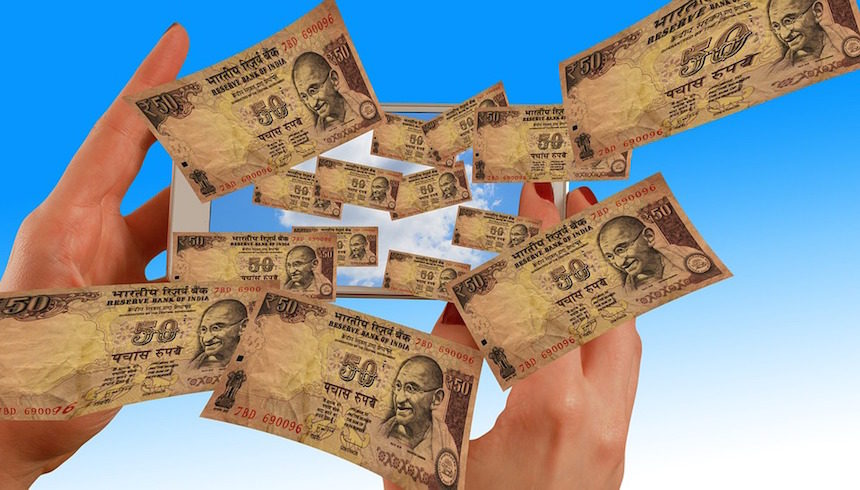Union Budget 2017:
Finance Minister, Arun Jaitley presented the Union Budget, 2017 on 1st of February, 2017, breaking the colonial tradition of presenting Union Budget on the last working day of February. Quite cheerfully, he started his speech by stating that ‘Spring is the season of optimisim.’ Why is the date important you ask?
Well, for one the earlier practice of presenting budget on the 28th or 29th of February gave states just about a month to plan their entire annual expenditure as per the Union Budget. However, this year they have double the time to systematically plan their expenses and receive the necessary approvals. Second, in his own words this would allow to pass the Appropriation Bill before the beginning of the next financial year.
The budget’s strong suit is also in the merger of railway budget with the Union Budget. Since 1924, the Railway Minister presented railway budget separately. However, this year Suresh Prabhu proposed the possibility of merging the two budgets, and NITI Aayog endorsed this.
Overall, it was clear that the thrust of this year’s budget was in the agricultural sector, promoting digitization, fighting the issue of taxation and corruption especially in political funding. Education and affordable housing have also been given sufficient importance.
One of the major strengths of this budget lies in how Mr.Arun Jaitley has managed to keep low fiscal deficit of 3.2% despite investing sufficiently in both rural as well as infrastructure sector. He said that the government will be committed to brining it down to 3% next year.
Agricultural and Rural Sector:
The main take away in this sector is the increase in allocation to MNREGA to 48,000 crores from 38,500 crores. The total allocation made to agricultural, rural and allied sector is 24% higher than last year i.e., Rs. 1.87 trillion
The government aims to achieve 100% electrification by May 1, 2018. Rs. 10 trillion will be provided as loan to farmers in 2017.
A dedicated micro-irrigation fund with an initial corpus of 5,000 crores will be set up to achieve the goal of ‘per drop more crop.’ Government will also set up dairy processing fund of 8,000 crores over three year with initial corpus of 2,000 crores as dairy is an important source of additional income for farmers.
The allocation for new crop insurance scheme i.e., Pradhan Mantri Fasal Bima Yojana has been increased to 13,420 crores from the budgeted 5,500 crores. Arun Jaitley said that ‘The coverage area of the insurance scheme will be increased from 30% of the total cropped area in 2016-17 to 40% in 2017-18 to 50% in 2018-19.’ He also said that National Agricultural Market (e-NAM) will be linked to the commodities market so that the farmers receive better prices for their produces.
Automobiles Industry:
As indirect taxes were untouched in the light of the impending GST, there was nothing specific about the automobile industry. However, there are some indirect effects:
- The income tax rate cut from 10% to 5% for person earning below 5 lakhs per annum will boost sale of entry level and small cars.
- Tax on Liquified Natural Gas (LNG) was reduced from 5% to 2.5%. However, as LNG accounts for a very small share of fuel consumption, this is not bound to have any immediate effects.
- 97,000 crores have been allocated for improvement of roads of Rs. which 55,000 crores is for development of roads and highways. This will push up the demand for commercial vehicles.
However, the disappointment was with the fact that there was no relaxation of tax on hybrid and electric vehicles.
Guillaume Sicard, President, Nissan, was of the opinion that ‘the lack of anything substantial for R&D for automotive industry, EV and hybrid vehicles is a dampener.’ It is expected that implementation of GST will have a positive impact on vehicle sales.
Infrastructure Sector:
Finance Minister, Arun Jaitley allocated a whooping 3.96 lakh crores to the infrastructure sector.
In a major move, affordable housing is now given infrastructure status, which means it can now avail the associated tax benefits, government incentives and institutional fundings. Also, under affordable housing carpet area of 30-60 square meters will be considered as against built up area of 30-60 square meters which is an increase of 20%.
Budget allocation for highways has increased from 57,000 crores to 64,000 crores. 2000 kms of coastal connectivity roads have been identified
The budget has encouraged public-private partnership in all infrastructure projects.
Long term capital gains tax benefits that could be availed in 3 years has been reduced to 2 years. Sops for affordable housing has been increased from 3 years to 5 years.
As far as rural housing is concerned, there is a proposal to create 1 crore houses by 2019 for those living in kuchcha houses. National Housing Bank shall refinance housing loans upto 20,000 crores. Pradhan Mantri Awas Yojna is allocated 23,000 crores. It has a mission of providing housing for all by 2022.
However, certain shortfalls are that there is nothing in the budget that impels the present urban infrastructure schemes such as AMRUT, smart cities
Youth:
Finance Minister, Arun Jaitley focused on maximizing employability of youth. Pradhan Mantri Kaushal Kendra was expanded to 600 districts from present 60 districts.
About 100 India International skill centres are to be established to offer advanced training and training in foreign languages so it could benefit those who are looking for opportunities outside the country.
A Programme called SANKALP (Skill Acquisition and Knowledge Acquisition for Livelihood Promotion Programme) will be launched to provide market relevant training to more than 3.5 crore youth. STRIVE will also be launched to strengthen industrial value enhancement through vocational training and apprenticeship programmes at a cost of 2,200 crore.
Poor and Underpriveleged:
Mahila Shakti Kendra will be set up at village level. There will be an allocation of 500 crores. This will help women in skill development, employment, digital literacy, heath and nutrition.
A financial assistance scheme will be announced by PM Modi for pregnant women.
Drug and Cosmetic Rules will be amended to make drugs available at reasonable prices and promote use of generic medicines.
Legislative reforms will be brought about to simplify, rationalize and amalgamate the existing labour laws. The Shops and Establishment Bill, 2016 will open up avenues of employment for women. The allocation for welfare of SCs, STs and minorities has been increased significantly.
Jaitley also announced that for senior citizens, AADHAR based smart cards will be introduced with their health details. LIC will implement a scheme to provide assured pension to senior citizens with an interest of 8% per annum for 10 years.
Railways:
Rashtriya Rail Sanraksha Kosh will be created with a corpus of 1 lakh crore over a period of five years for passenger safety. 35,000 km railway lines shall be put up.
Station redevelopment will be undertaken. At least 25 stations will be awarded for station redevelopment and 500 stations will be made disabled friendly by providing lifts and escalators.
SMS based clean my coach service has started. By 2019, all trains will have bio-toilets. Pilot plants for environmental friendly disposal of solid waste and conversion of bio-degradable waste to energy has been set up at Delhi and Jaipur railway stations.
Railways will offer competitive ticket booking facility. Service charge on booking of e-tickets on IRCTC has been withdrawn. As metro is emerging as an important mode of transport, Metro Rail Policy will be implemented to focus on innovative methods implementation, finance and standardization.
Finance:
Increase in the capital of the public sector banks is pertinent given the elevated NPA levels to almost 12% as on September 2016. Under such circumstances, budget was expected to push the banking system capital. However, Rs, 10,000 crores allocation seems to be insufficient, though the Finance Minister mentioned that more funds will be made available as and when required.
Apart from this, Finance Minister announced that the Foreign Investment Promotion Board will be phased out.
High net worth NBFCs can now participate in IPOs. Also, certain important NBFCs regulated by RBI having above a certain net worth to be categorized as Qualified Institutional Buyers just like insurance companies and banks.
New FDI Policy is under consideration. Draft Bill to curtail illegal deposit schemes in the pipeline. Apart from this legal framework has been strengthened with the passing of Insolvency and Bankruptcy Code and amendments to the SARFAESI Act.
Tax Proposals:
One of the major changes is that income tax rate has been decreased from 10% to 5% for tax slab of Rs. 2,50,000 to Rs. 5,00,000. Surcharge of 10% for those whose annual income is between 50 lakhs and 1 crore and 15% surcharge for income above 1 crore.
People with annual income of 5lakh will have a simple one page return and people filing IT return for first time will not come under government scrutiny.
Moreover, defending the demonetization move, Finance Minister said that note ban will have only transient impact on the economy. In the government’s efforts to further curb parallel economy, he announced that black money SIT has suggested that one cannot undertake cash transactions of more than 3 lakhs. Turning up the heat on politicians as well, he announced that maximum cash donations that a political party can receive from source will be Rs. 2000.
In order to benefit MSMEs, tax has been reduced for corporates with a turned over of upto 50 crores to 25%. About 67 lakh companies fall under this category, which means 96% of the companies are going to benefit with this proposal.
Picture Courtesy: Pixabay








There's 1 Comment